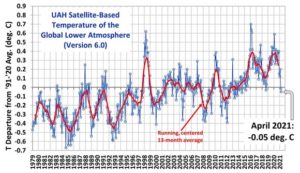by Cap Allon, July 14, 2021 in Electrroverse
According to the June, 2021 report recently released by the National Snow and Ice Data Center (NSIDC), it is revealed that the ice locked at Earth’s poles is actually GROWING.
The opening paragraph of the report reads: “Sea ice in the Southern Ocean surrounding Antarctica was well above the 1981 to 2010 average extent in June, rising above the ninetieth percentile near the end of the month”.
But that’s as far as the NSIDC go…
They have plenty to say on the Arctic –which is experiencing its sixth lowest extent on record (big whoop)– but when it comes to Antarctica, I hear nothing but “crickets” — clearly, the icy continent GROWING in mass, and so offsetting the comparatively small losses registered by its northern cousin, is seen as a dampener to the AGW party.
Or perhaps the NSIDC are just letting the data speak for itself:
…
…
… it is revealed that Antarctic sea ice extent, as of June 12 (or day 193), is at an impressive 15.808 million square kilometres (6.104 million square miles) — this is the largest extent at this time of year since 2015, and also sees it tracking well-above the 1979-1990 average.
This news, if you’re an alarmist, is surely something to be celebrated.
The icy continent holds 90% of Earth’s freshwater — so, if you’re one of the gullible that have been conditioned to lose sleep over ‘sea level rise’ then this latest datapoint should quell those fears.
Unfortunately though, alarmists selectively ignore ‘good news’ and instead accumulate only bad news–the news that supports their fears, which, thanks to the likes of the IPCC and their MSM lapdogs, is rammed down our collective throats on a daily basis — it is impossible to ignore.
It’s a type of cognitive dissonance, I guess — people are rejecting new information that conflicts with their existing beliefs, even when the new information is positive: this isn’t how science is supposed to work.
Oh, and the NSIDC has more.
Looking at their historical chart which runs back to 1979, an overall trend of growth is shown here, too.
According to the data, ice around the southern pole has been increasing at ≈1 percent per decade:
…

